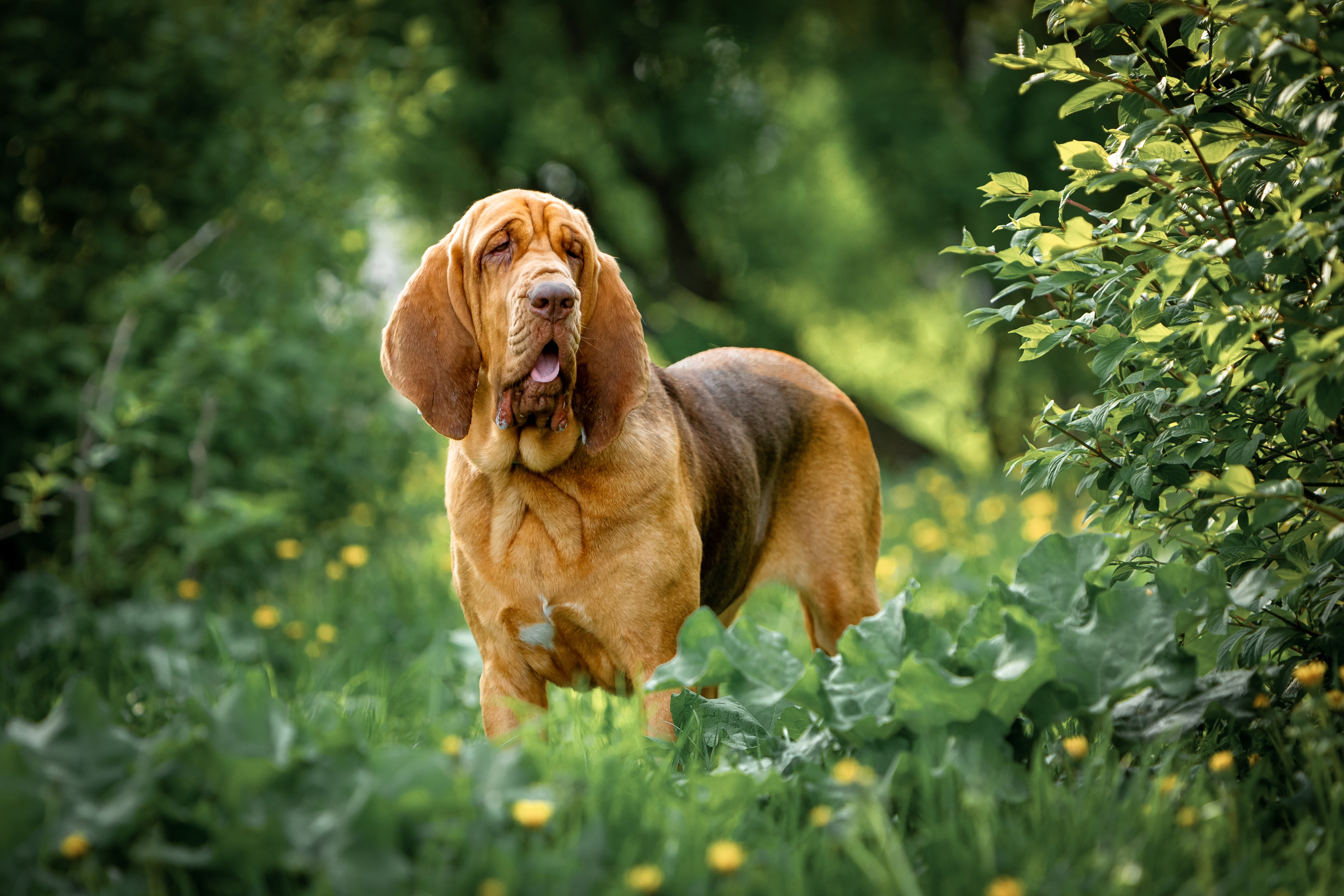Breed characteristics carousel
Learn More
Need to Know
- Dogs suitable for experienced owners
- Extra training required
- Potential health risks
- Enjoys vigorous walks daily
- Large dog
- Some drool
- Requires grooming
- Chatty and vocal dog
- Barks and alerts to visitors/anything unusual
- Generally friendly with other dogs
- May need additional training to live with other pets
- May need additional supervision to live with children
- Needs a large yard and does well in suburban or rural areas
- Cannot be left alone
- AKC Registered Breed

Personality
While calm companions in a home, Bloodhounds are tireless once on a scent. Tough, stubborn, and independent, they can also be gentle, placid, and trustworthy, especially around children, although they might be too serious and not playful enough for some kids. They are not lazy hound dogs by any stretch of the imagination, but rather active, instinctual hard workers. They aren’t the easiest dogs to train for obedience but pick up trailing tasks easily and with gusto.
St. Hubert’s Hounds, as they were originally called in the 7th century, were used to track wolves, big cats, or deer. The Bloodhound dog was brought to Britain by William the Conqueror. They are called Bloodhounds because of their pure and noble breeding.
The Bloodhound’s nose is extraordinary and they can easily track a human over long distances even after several days. While their original role was to help with hunting, they have also found work in law enforcement and in search and rescue in past and present times. They came to America in the mid-1800s.
Bloodhound owners will need to be ok with lots of drool and will ideally have scenthound experience. They can’t be left alone and require regular exercise and mental stimulation. They won’t care about the weather, so owners will need to be prepared to get outside and active no matter what.
Like an Olympic athlete, the Bloodhound breed has exceptional stamina and will want to exercise daily by sniffing, not traditional leash walking.
A big dog like a Bloodhound needs big spaces to roam and sniff, so suburban and rural areas are best for them.
The short and smooth Bloodhound coat requires little grooming. A brush once in a while will help remove dead hairs, and regular checks should be done on their eyes and ears.
The only interest Bloodhounds have is scent work, so training that doesn’t involve using their A+ noses might not be of interest. They need to be trained to walk or run on a harness or leash, which they might be resistant to. Scentwork and sniffing games will give them an outlet to use their talents.
Gentle and patient, Bloodhounds make good family dogs for families with older children. They may be too big and slightly clumsy for tiny tots.
The cost of a Bloodhound from a breeder is significantly more than the cost of adopting one from a local shelter or rescue. The adoption fee usually covers additional items such as spaying or neutering, vaccines, and microchipping.

Learn more about feeding and caring for your Bloodhound on Purina.
Did You Know?
- When James Earl Ray, the murderer of Martin Luther King, escaped from prison in 1977, he was captured by a pack of Bloodhounds who tracked him down several days later in the mountains of Tennessee.
- One of the most successful Bloodhounds to search for criminals was a bloodhound in Kentucky. He recaptured over 600 fugitives, and in one case, the trail ran for 138 miles over 104 hours.
- In many states, a Bloodhound’s evidence in court cannot be challenged.
